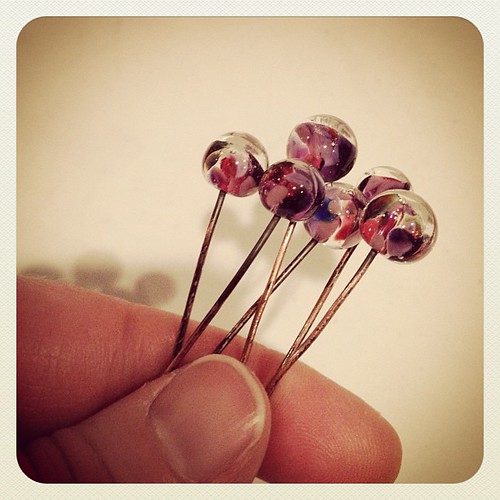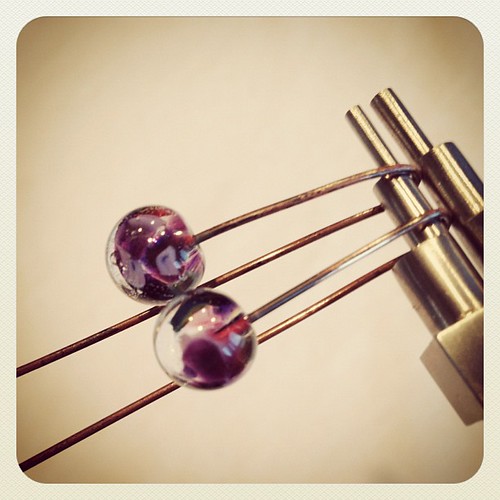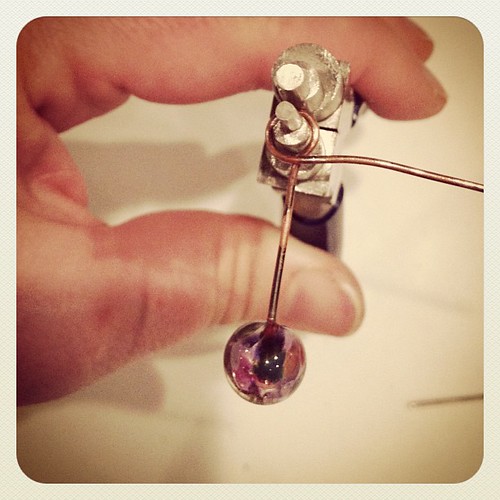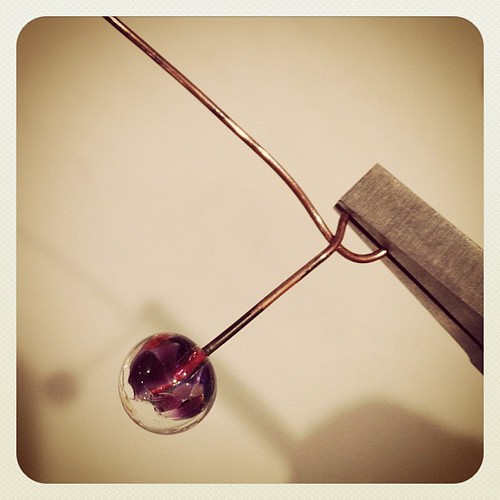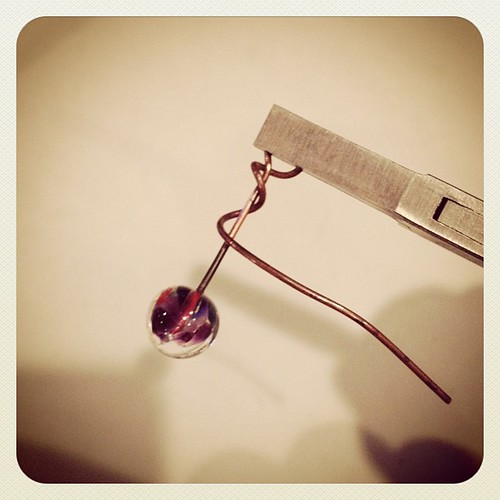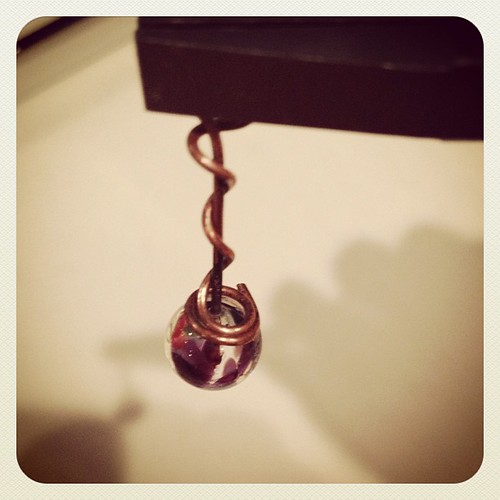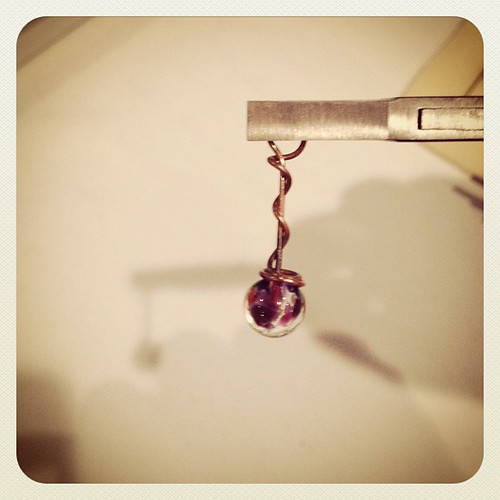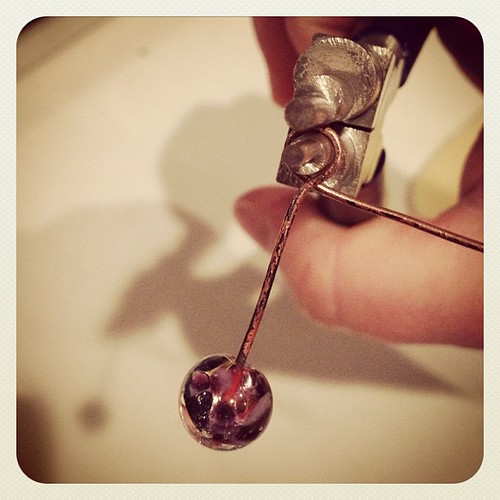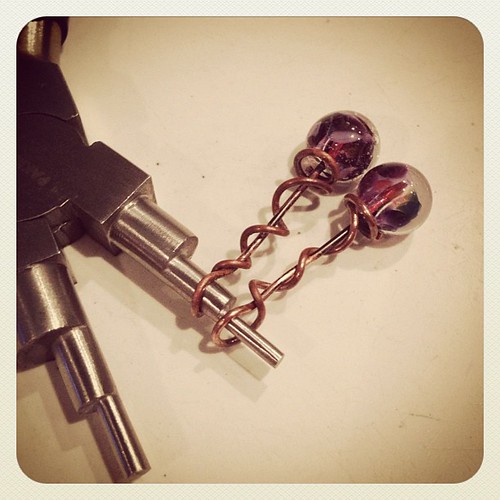This post is one of three on soldering giving you some of the hints and tips that I teach my evening class students. This time I'm going to show you the basic tools needed to solder silver and copper, and also talk about the different types of solder available - and why you can get different types of solder!
This is my soldering area - a little messy, I know, but soldering isn't exactly the cleanest part of making jewellery. You don't actually need a lot of equipment to start soldering. Each tool is quite cheap, although the price can obviously add up, but if you look after the tools well they will last you for years.
Going through the labels we have:
- Old slate tiles - left over from a DIY project, these protect the table below from the heat. You can buy soldering sheets that do the same job, but tiles are cheaper!
- Soldering block - extra protection from the heat. These also absorb some of the heat from the flame and pass it back into the silver, so if you have several pieces on the block waiting to be soldered (for example if you are soldering lots of links for a chain), they will start to heat up before the flame even touches them. I have a couple of blocks, and if I am soldering a big piece I will prop a couple up behind the block I'm working on to radiate the heat back to the metal.
- Charcoal block - used to melt small balls of silver such as in this tutorial
- Reverse action tweezers - these take a bit of getting used to as they open when you push the handles, opposite to how most pliers work. This is useful though, as I often use them to hold, for example, an earwire in place on the back of the earring during soldering and I don't have to remember to hold them tightly closed, they do the job for me. They are insulated.
- Solder probe - not essential put useful for pushing solder back to where you want it to be if it moves during the process.
- Third hand with tweezers - not essential but useful for holding small pieces during soldering.
- Torches - I've got two hand torches, and also a propane torch that feeds of a gas bottle under my desk, out of sight. It is the heat of the piece of work that melts the solder, not the heat of the flame, and so if I am soldering a big piece such as a bangle I need to use a bigger torch to heat the silver up enough. The smaller torch is ideal for chains, clasps, earwires etc. The small torch came from Cookson Gold, as did most of my soldering equipment, and the big one is a plumber's torch from a DIY store!
- Quench pot - such a sophistcated expensive piece of kit! Never put hot metal in the pickle (more about pickle in a minute - it's not what you put with your cheese sandwich), always quench it to cool it down first. And if you manage to melt the side of it with a hot piece of metal you can always eat some more ice cream to get a new pot.
- Goggles - you've only got one pair of eyes!
- Binding wire - useful for holding together larger pieces during soldering.
- Pennies! - useful for propping up small pieces while you solder them.
- Snips/shears - use these to cut solder strips into smaller pieces (pallions) ready to use for soldering.
- Pickle pot - another expensive piece of equipment! You can buy expensive pickling units, but I use an old slow cooker that cost £2 at a carboot sale. Safety Pickle comes as salts that you mix with water. Always read the safety sheet that comes with it. It is a mild acid solution that cleans off the copper oxides that form on the surface of sterling silver when it is heated. It works quicker if it is warm, but will still work when cold, just a lot more slowly. My pickle sits in a pyrex dish that sits in water inside the cooker. I can't put the pickle straight into the cooker as I haven't got a ceramic insert in mine, it's just steel. If you put steel or iron (eg reverse action tweezers, binding wire) into the pickle, all of the copper the pickle has collected off the silver as it's cleaned the oxidisation off will go back on the silver! Which leads me to....
- Brass tweezers - use these to take work out of the pickle instead of steel tweezers. You can also buy plastic tweezers.
- Borax cone and dish - a cheap and easy to use form of flux. Put a very little amount of water in the bottom of the dish and grind the cone in it to form a milky paste which is then painted onto the silver. Remember solder will only flow, rather than ball up, if flux is present.
- Auflux - an artificial form of flux, again relatively cheap but doesn't last as long as a cone. Again, just paint it on where it is needed.
- Solder strips - the traditional form of solder. Cut into smaller pieces (pallions) ready to use for soldering. I have a little pot for each solder - Hard, Medium and Easy - I'll explain those terms in a bit!
- Solder paste syringes - a modern form of solder - some people love it, some people hate it saying it's cheating! I say it has got its place and can be useful, but it doesn't replace solder strips. Solder paste is basically ground up solid solder mixed with a flux so that it's ready to use. I only really use it for chain work as I find it more convenient - just work along the row of links waiting to be soldered, squeezing a little bit out at a time! It is much more expensive that solder strips though. Again, I've got Hard, Medium and Easy solder.
Why do you need different melting temperatures? Because you often need to solder more than one join on a piece of work, and when you solder the second join, you don't want the first to remelt or it is likely to weakend. Take the Turquoise Shells pendant shown above as an example.The bezel around the cabochon was soldered closed with hard solder, and then after shaping was soldered onto the base plate with medium solder - the temperature needed to melt the medium solder wasn't high enough to remelt and weaken the easy solder. The prongs and the bail were soldered on with easy solder. They were only small pieces to solder on, so as long as I was quick and carefully with what I was doing I could use easy solder on more than one join without affecting the hard or medium solder or the previous easy solder joins. If I only need to solder one join, for example on a bangle, then I just use easy solder as it's easier to melt, but some people prefer to use medium solder as it can be a better colour match to the silver. I use the same techniques to solder copper, and to solder silver and copper together, although I do find that copper needs more flux than silver does.
Do let me know in the comments if you have any questions and please do leave a comment if you have a tip of your own to share!My next post on soldering will be in a fortnight's time so I will do my very best to answer any questions either in the comments below this post or in my next post, which will cover how and why soldering works, how to get it to work (most of the time) and what to do if it goes wrong.
Jo Tinley
Daisychain Designs





